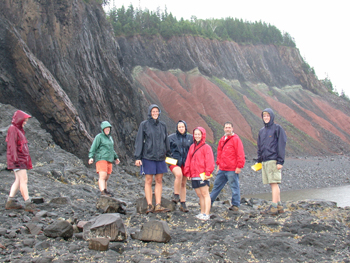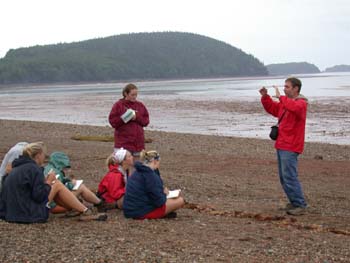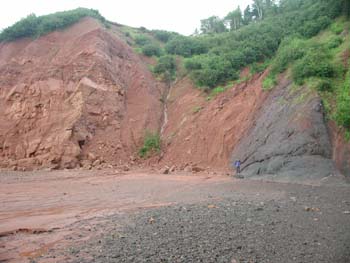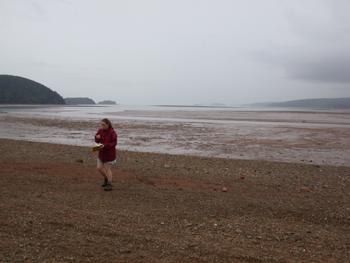Cobequid, Nova Scotia
|
LOCATION The photograph to the right shows not only our enthusiasm for basalts and fault lines, but also a great view of the interbedded red shales and dark gray basalts. Note the spectacular view in the background of this image. Read on to learn more about the processes that created this amazing landscape.
|
FAULTS, BASALTS, AND DEPOSITION Sandstones and shales were deposited on top of the thick sequence of basaltic lava flows. The sediments are primarily lacustrine (lake) deposits. The sandstone that we see today used to be above the gray basalts (because the basalt was here first) but has since slid downward along the fault lines, and not lie next to them. |
click on this photo to get a sense of the scale at Cobequid |
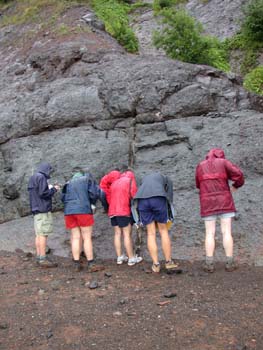 |
The image at left depicts Bob, Ellen, Dave, Alisha, Jo, and Kate, hard at work examining the wet basalts. These outcrops were enormous! Thankfully, the tide was out so we could get an up close look. |
| CLICK ON ANY OR ALL OF THE IMAGES TO VIEW A LARGER PHOTO |
